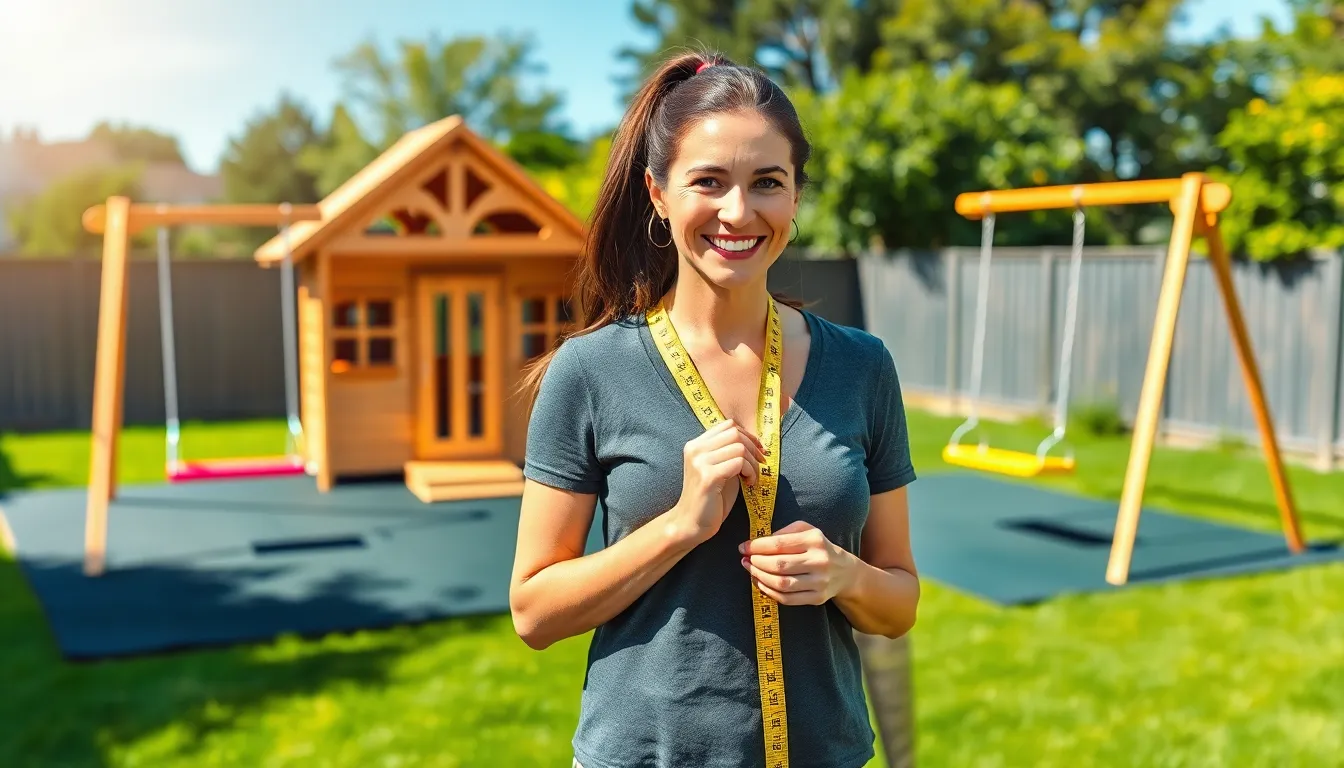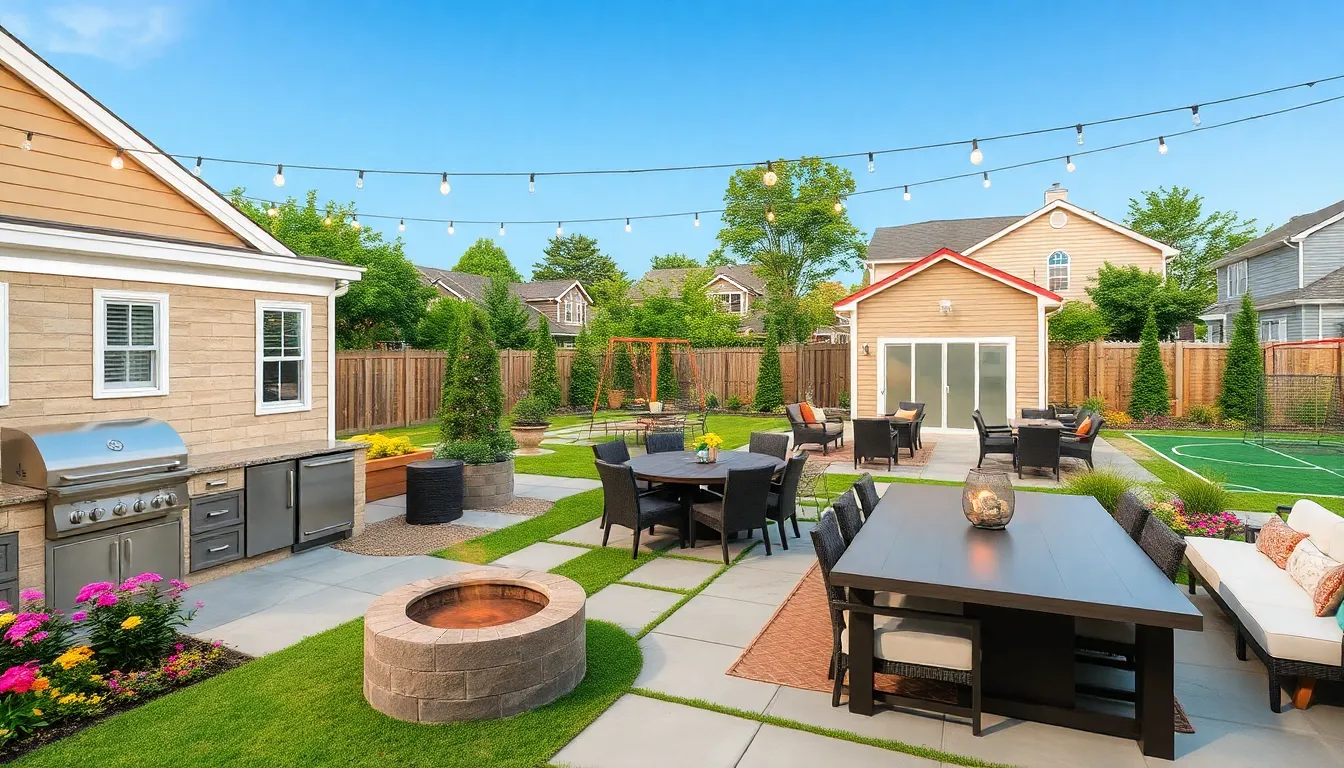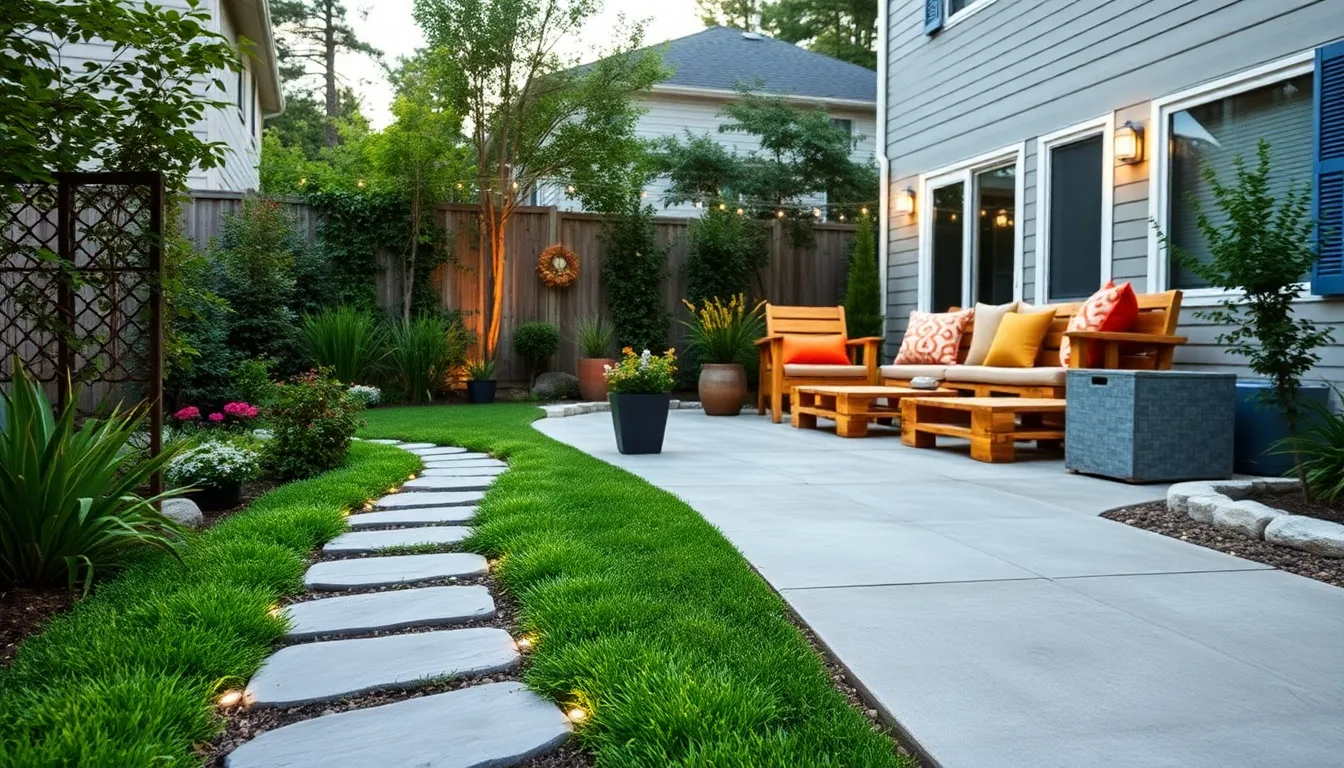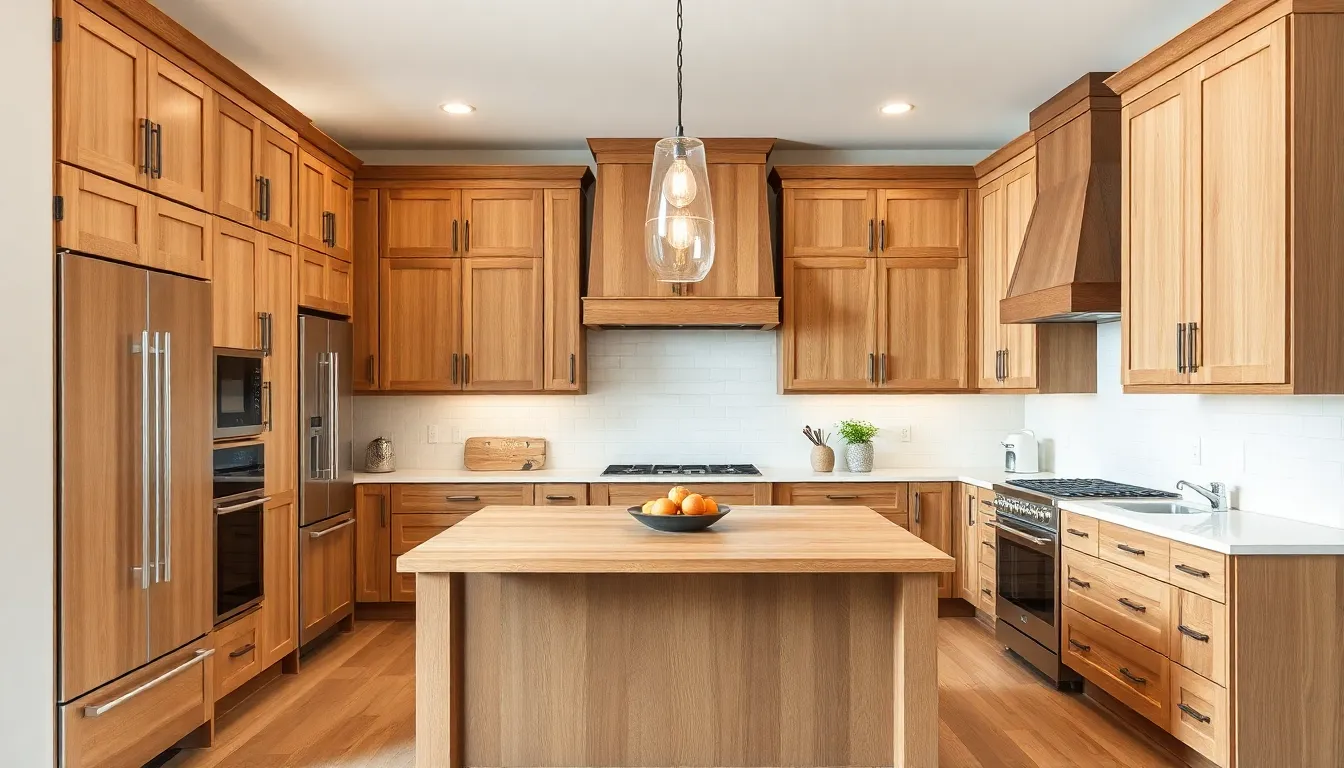Table of Contents
ToggleImagine transforming your backyard into a mini amusement park without breaking the bank or your sanity. A DIY backyard playground isn’t just a project; it’s a ticket to hours of laughter, adventure, and maybe a few scraped knees. With a little creativity and some elbow grease, parents can create a magical space where kids can unleash their inner superheroes and explorers.
What Is a DIY Backyard Playground?
A DIY backyard playground consists of custom play structures installed in a home’s outdoor space. It offers children a unique environment for play and exploration while enhancing family interactions. Parents design these playgrounds using various materials like wood, plastic, or metal, tailoring elements to fit their yard’s dimensions and their children’s interests.
Playhouses, swings, climbing structures, and slides are common features in DIY playgrounds. Creative parents integrate natural elements like trees or bushes, turning existing landscape into adventure zones. Safety remains crucial, prompting many to incorporate soft ground coverings such as mulch or rubber mats.
Building a DIY playground promotes both physical activity and imaginative play. Children engage actively as they navigate different structures, encouraging social skills and teamwork during group play. Crafting such a space fosters responsibility in kids, who can help maintain and enjoy the playground over time.
The average cost for building a DIY backyard playground ranges from $500 to $2,500, depending on the chosen materials and complexity of the design. Parents can find numerous online resources and plans to assist with design ideas and construction techniques. Local hardware stores often provide guidance on appropriate materials and tools.
Through careful planning and creativity, families design playgrounds that suit their unique needs and preferences, ultimately crafting a fun-filled atmosphere right outside their back door. DIY backyard playgrounds create lasting memories and encourage children to spend more time outdoors.
Benefits of a DIY Backyard Playground
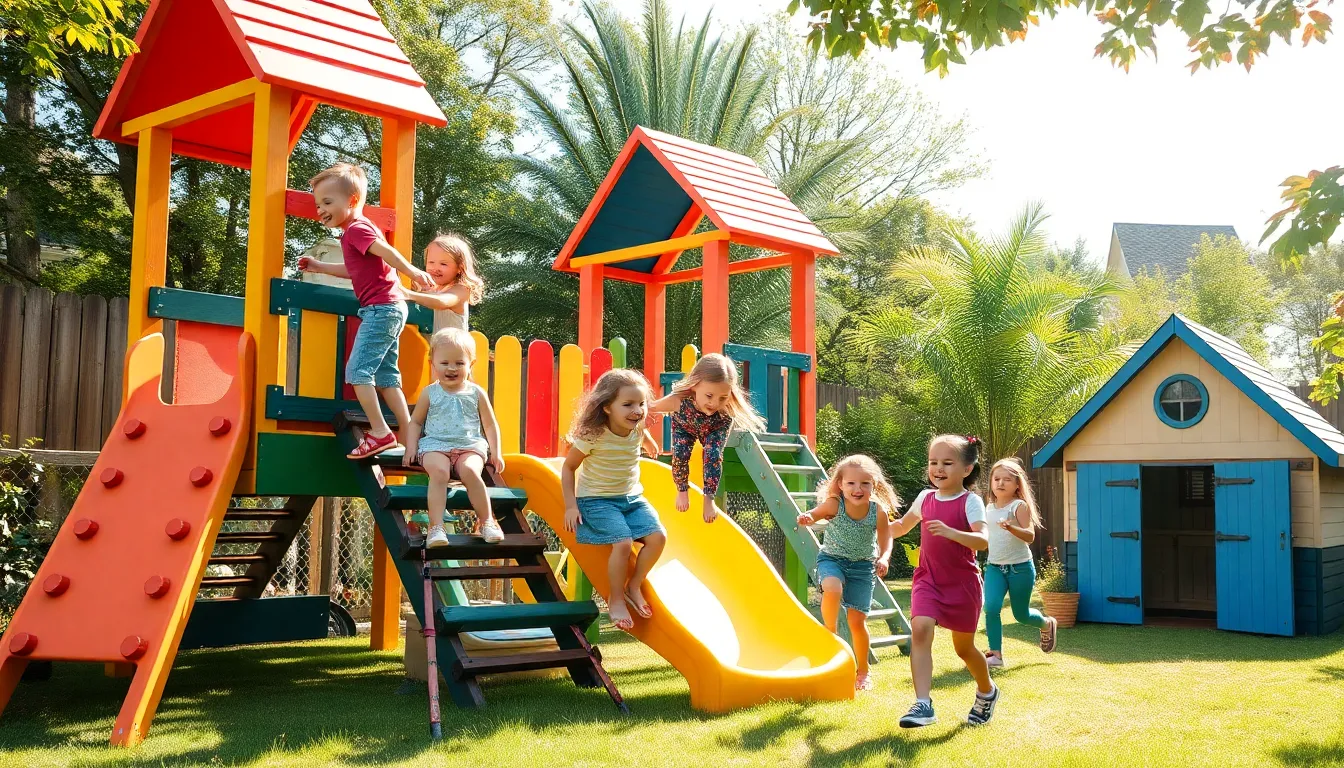
Creating a DIY backyard playground offers multiple advantages for families, enhancing children’s playtime experiences.
Encouraging Physical Activity
Playing outdoors promotes physical movement and helps children develop strength and coordination. Climbing structures and swings encourage kids to run, jump, and climb. Engaging in these activities contributes to improved overall health. Regular access to a play area fosters a love for fitness and helps combat childhood obesity. Parents see happier and more active children when they provide a dedicated space for play. Studies show that outdoor play supports cardiovascular health and strengthens muscles. A themed fort or obstacle course can motivate kids to stay active, making physical fitness fun.
Fostering Creativity and Imagination
A DIY playground sparks imagination and encourages creative play. Children can invent their own games or scenarios using simple play structures. Playhouses might serve as pirate ships or castles, enhancing storytelling during playtime. Custom designs cater to a wide range of interests, allowing children to explore different themes. Having an outdoor play environment stimulates problem-solving skills and enhances social interaction. Collaborative playtime promotes teamwork as kids engage in shared activities, making friendships stronger. Parents notice improved emotional development when children express themselves freely in a creative space. With endless possibilities, every day can become an exciting adventure.
Planning Your DIY Backyard Playground
Planning a DIY backyard playground involves thoughtful consideration of both space and safety. This ensures a fun yet secure environment for children to explore.
Assessing Space and Safety
Assess space by measuring the backyard area designated for playground equipment. Space should allow for safe distances between structures. An essential aspect of safety includes checking for overhead hazards like tree branches or power lines. Keep in mind that soft ground coverings such as mulch or rubber mats provide added protection against falls. A wider area fosters various activities, encouraging kids to run and play. Families can also ensure that the play zone is visible from common household areas, allowing for easy supervision during playtime.
Choosing the Right Equipment
Choosing equipment starts with understanding children’s ages and interests. Selecting appropriate options like swings, slides, and climbing structures ensures engaging play experiences. Consider durability of materials, opting for weather-resistant options like treated wood or sturdy plastic. Many families appreciate adjustable swings and modular components, allowing adaptability as children grow. Prioritize safety features such as non-toxic finishes and rounded edges. Selecting equipment from reputable manufacturers establishes quality assurance for long-lasting fun. Researching equipment options online provides additional inspiration for unique designs.
Building Your DIY Backyard Playground
Creating a backyard playground requires thoughtful planning and the right materials. Families can ensure a safe and enjoyable space for children by following these guidelines.
Essential Tools and Materials
Gathering essential tools and materials sets the foundation for the project. Common tools include a hammer, drill, saw, level, and measuring tape. Families often choose pressure-treated lumber for durability and resistance against weather conditions. Playground equipment, like swings and slides, typically requires sturdy, weather-resistant materials. Safety features, such as soft ground coverings, need to include mulch, rubber mats, or grass to reduce injury risks. Families should also select fasteners, like screws and bolts, that withstand outdoor exposure. These items contribute to a secure and lasting playground structure.
Step-by-Step Installation Guide
Following a step-by-step installation guide streamlines the process. Start by marking the playground area using stakes and string to visualize the layout. Parents often choose locations that maximize safety and accessibility. Next, digging holes for posts creates a stable foundation; each post must be placed deep enough to ensure stability. Securing the posts with cement provides additional strength. Once the framework is completed, attach swings, slides, and climbing structures per manufacturer instructions. Add ground coverings around the equipment for safety. Completing this process results in a functional, safe playground for children to enjoy.
Designing for Longevity and Safety
Creating a safe and durable DIY backyard playground requires thoughtful planning and regular maintenance. Families should prioritize safety and longevity in their designs to ensure children enjoy the space for years to come.
Maintenance Tips
Regular maintenance keeps playgrounds safe and functional. Check equipment weekly for wear and tear, tightening loose bolts and replacing worn-out parts as needed. Inspect soft ground coverings for signs of compaction or degradation, replacing them to prevent injury. Rinse off wooden structures periodically to remove dirt and prevent mold growth. Clean slides and swings to ensure no debris accumulates. Maintaining a clear pathway helps prevent tripping hazards. Regularly trim branches and clear debris from the play area.
Safety Features to Consider
Incorporating key safety features enhances playground security. Use soft ground coverings like rubber mats or mulch to cushion falls and absorb impact. Ensure proper spacing between structures to allow for safe movement. Install barriers around elevated surfaces to prevent falls. Select equipment with rounded edges and no sharp components. Choose non-toxic materials for all components, ensuring durability against weather conditions. Consider shade solutions to protect children from sun exposure during play. Regularly review safety guidelines from organizations such as the Consumer Product Safety Commission for best practices.
Creating a DIY backyard playground can be a rewarding experience for families. It not only enhances outdoor play but also fosters creativity and physical activity. With careful planning and the right materials, families can design a safe and enjoyable space that encourages children to explore and engage with their surroundings.
By prioritizing safety features and regular maintenance, parents can ensure the playground remains a fun and secure environment for years to come. This project can lead to countless memories and adventures, making the backyard a central hub for family bonding and play. Embracing this opportunity can significantly enrich children’s lives while promoting a love for the outdoors.

